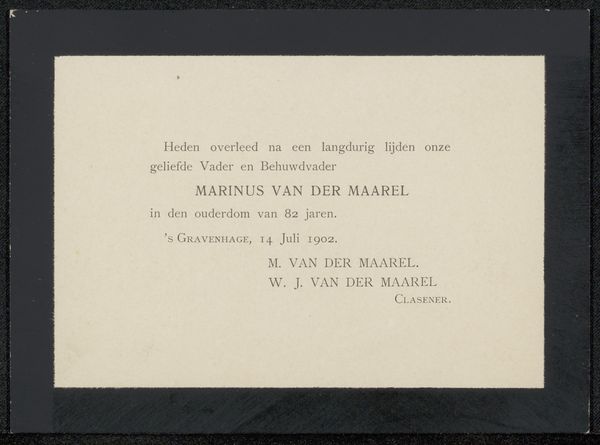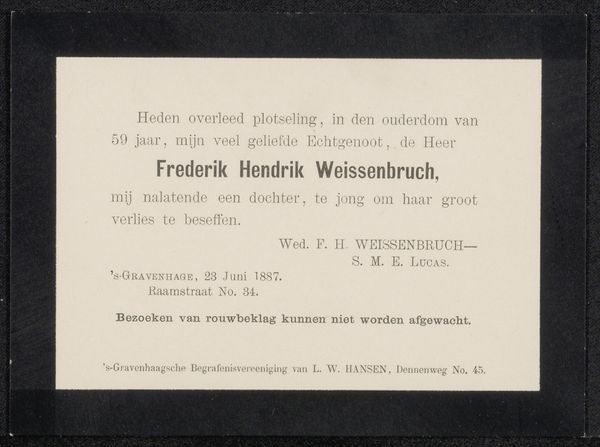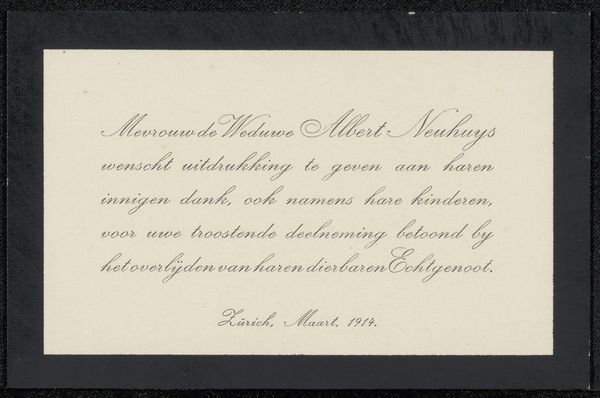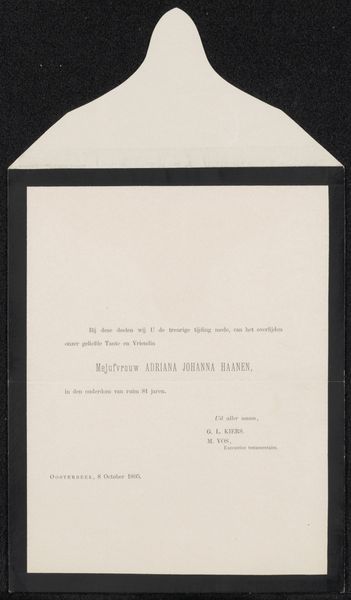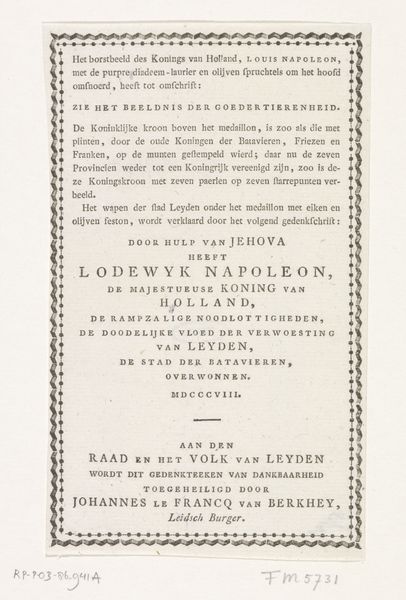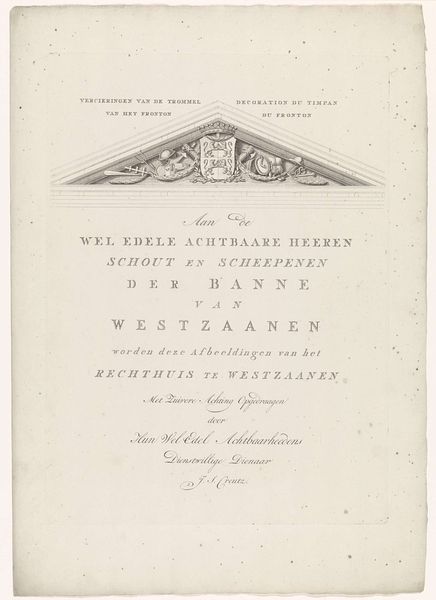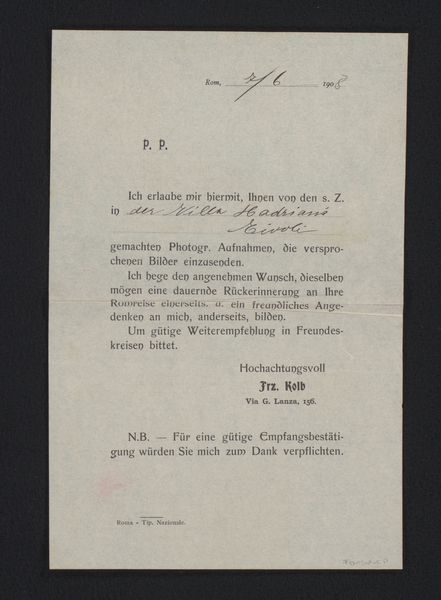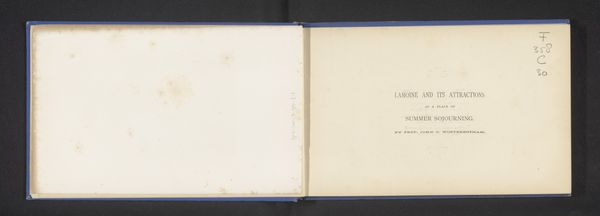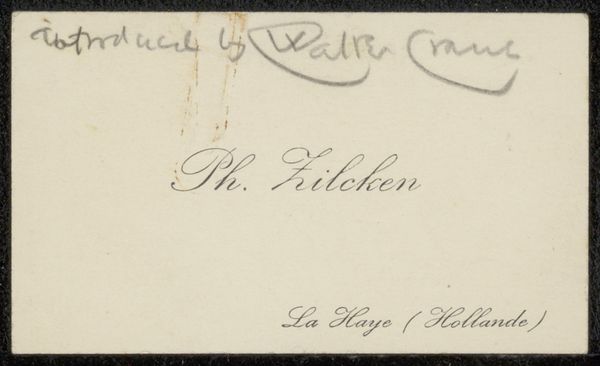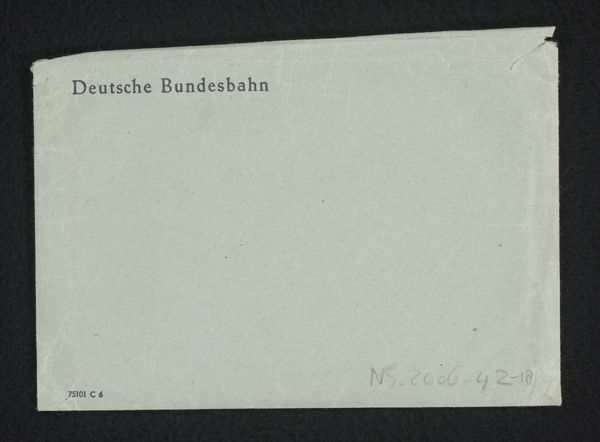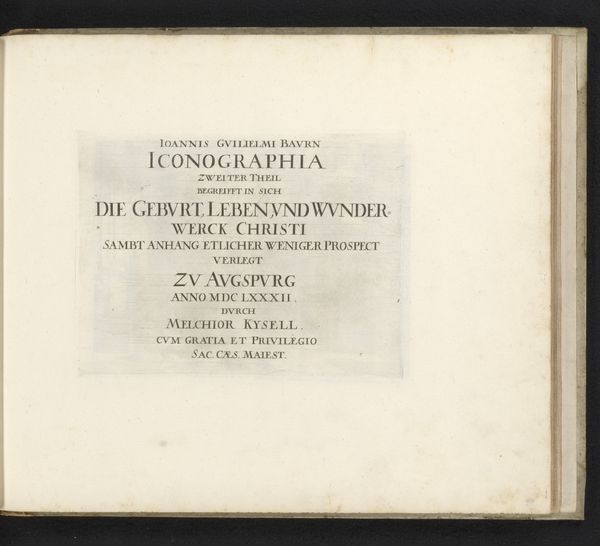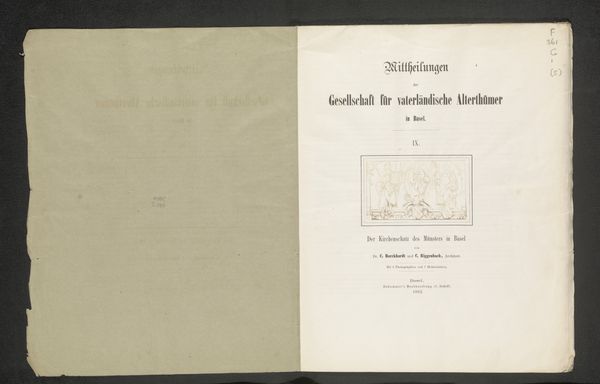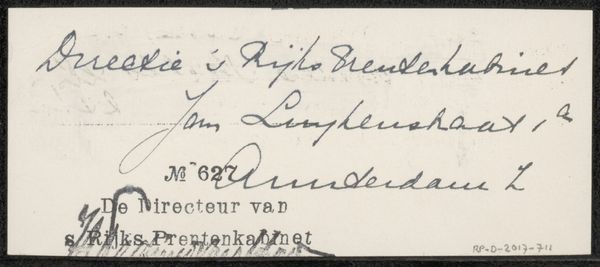
Geboortekaart van Louise Helene, dochter van de heer en mevrouw Van Welij-Eck c. 1939
0:00
0:00
graphic-art, print, paper, typography
#
portrait
#
graphic-art
#
ink paper printed
# print
#
hand drawn type
#
paper
#
typography
Dimensions: height 98 mm, width 137 mm
Copyright: Rijks Museum: Open Domain
Curator: This is a birth announcement, "Geboortekaart van Louise Helene, dochter van de heer en mevrouw Van Welij-Eck," made around 1939, using print on paper. What strikes you about it? Editor: I think it's charmingly understated. The faded typography and delicate bird drawing on the left give it a gentle, almost fragile feel. I'm curious, what details jump out to you, given the materials and the time period it was made? Curator: The material choices are particularly interesting here. This wasn't mass-produced lithography. It's a printed piece, likely on relatively inexpensive paper stock, judging by its texture. This indicates a particular social class able to access, but not flaunt, the means of print production. Also, consider that this announcement appeared around the start of World War II; paper was already becoming a scarce resource. Do you see how these circumstances shape our interpretation of the artwork? Editor: So, the apparent simplicity might actually speak to the constraints of the time, regarding accessibility and the labor that went into producing this one single announcement. And the hand-drawn type adds to the unique appeal, in an era where mechanized fonts were common. How does that idea influence its value, or perceived value as "art"? Curator: Exactly. It blurs the line between practical printed matter and a cherished keepsake. What elevates it beyond simple documentation is the intentionality behind the design, evident in the paper choice, the carefully typeset information, and the quiet drawing of a bird symbolizing new life. How might we re-evaluate ‘high art’ standards by analyzing these types of printed paper ephemera that acknowledge the conditions of its own production and its own making? Editor: That makes me reconsider my initial impression of simple elegance. The materials and production tell a story about resourcefulness, societal values, and the nuanced act of celebrating new life amidst looming hardship. Curator: Precisely. Paying attention to those elements reframes our understanding, doesn't it?
Comments
No comments
Be the first to comment and join the conversation on the ultimate creative platform.
